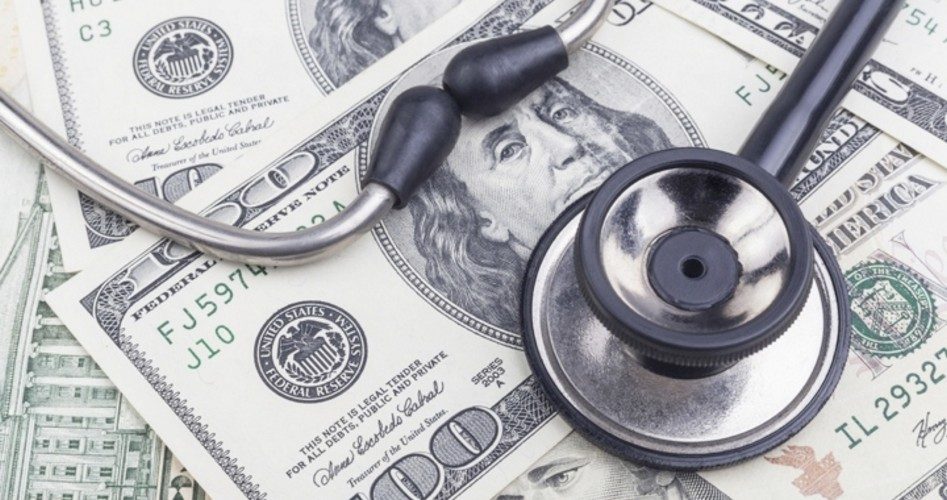
The response to the admission by Deputy Director for the Centers for Medicare and Medicaid Services, Penny Thompson, made in September before the House Oversight and Government Reform Committee and chaired by Rep. Darrell Issa (R-Calif.), that payments made by the federal government to New York’s state-run development centers were “excessive and unacceptable,” was simple and to the point: those overpayments were “inexcusable” and “exceeded the entire Medicaid budgets of 14 states” and added that “the failure … suggests an institutional failure and a pattern of irresponsible actions that have cost the taxpayers billions.”
The amount, just in New York, is estimated by Issa’s committee to be in excess of $15 billion, equivalent to $1.9 million per patient per year!
Using the bureaucratic shuffle which Thompson has no doubt refined in her 20 years as a top-level bureaucrat for Medicare and Medicaid, she admitted:
The growth of the daily Medicaid reimbursement rate for [New York] State’s developmental centers has significantly outpaced those of privately operated developmental centers and New York claimed significantly more for the State-run developmental center services than its actual costs. (emphasis added)
The daily rate for a Medicaid beneficiary to reside in a developmental center grew from $195 per day in 1985 to $4,116 in 2009, vastly outgrowing the Medicaid daily rate for private developmental centers. (emphasis added)
Simply put, bureaucrats in New York have been milking the system for decades, but Thompson claims she just found about it a few months ago. Here’s more from her report to Issa’s committee:
CMS did not begin working with New York to address the situation fully until 2010. Since then, CMS has been working with the State to understand the circumstances around the inflated rate and more fully address this problem.
The problem began back in 1994 when New York State set up the reimbursement rules, with the approval of Thompson’s agency. But there were enough loopholes and undefined parameters to drive a 100-passenger train through, and sure enough, New York took maximum advantage of them. Concluded Thompson:
The Medicaid payments made to New York for the developmental centers were excessive. CMS is working to correct the payments to New York and to improve CMS’ approval and monitoring processes to detect excessive payments more quickly and to prevent excessive payments from being made in the first place.
Issa’s committee was aware that there was massive fraud taking place in the Medicaid program, a federal program financed with taxpayer monies but run by the states. Back in April his staff prepared a report entitled “Uncovering Waste, Fraud and Abuse in the Medicaid Program” which examined three cases of such fraud, New York being just one of them. The numbers are incomprehensibly large:
James Mehmet, a former chief state investigator of Medicaid fraud and abuse in New York City, believes that at least 10% of Medicaid dollars are lost on fraudulent claims, while another 20% to 30% consist of abuse, or services that were delivered but that were unnecessary.
Waste, fraud, and abuse in New York’s Medicaid home-based health services [alone] are rampant. A Department of Health and Human Services Inspector General’s (IG) audit, for example, estimates that between January 2004 and December 2006, New York City improperly claimed over $275 million in Medicaid funds for personal care services. A second IG audit found that New York improperly claimed $207 million for rehabilitative home care services provided between January 2004 and December 2007…
Unfortunately, these three cases demonstrate just a tiny fraction of the instances where daily occurrences of Medicaid waste, fraud, and abuse occur…
In May the Office of Inspector General for the Department of Health and Human Services explained how the scam worked in New York:
Developmental center payment rates are set using a complex methodology detailed in the State’s Medicaid State plan. The rate is currently calculated by using a starting point that the State describes as “total reimbursable operating costs,” which includes the prior year’s total reimbursable operating costs, a volume variance adjustment, and a trend factor increase.
Total reimbursable operating costs do not reflect the State’s actual costs. The rate-setting reimbursement methodology for the developmental centers was originally approved in January 1986, retroactive to April 1984.
And as the scam developed over time, additional changes favoring increased reimbursement demands from the state were developed, and approved, by Thompson’s agency:
Since then, the State has received CMS approval for more than 35 State plan amendments related to this methodology…
Specifically, the growth of the daily Medicaid reimbursement rate for the developmental centers has significantly outpaced those of both State-operated and privately operated ICFs—from $195 per day in SFY 1985 to $4,116 per day in SFY 2009, which is the equivalent of $1.5 million per year for one Medicaid beneficiary. This rate is more than nine times the average rate for all other ICFs for the same period. (emphasis added)
This kind of fraud has been rampant for years, but most of the blame for such “fraud, abuse and waste” has been blamed on everyone BUT the states’ Medicaid administrators. David Murphy, a fraud specialist and professor at Lynchburg College in Virginia, noted in July that everyone had his hand in the honey pot – everyone except the agencies themselves. Fraud involved:
• Billing errors
• Fraudulent claims
• Improper private-pay payments, and
• Counterfeit prescription drugs.
Not one word about the agencies involved, however. Said Murphy, “Medical fraud is committed everywhere, by just about everyone.”
Lawrence Huntoon, MD, a board-certified neurologist from Buffalo, New York, and Editor-in-Chief of the Journal of American Physicians and Surgeons, reviewed the statement made by Thompson and concluded:
Now we have indisputable evidence that government itself is a major source of fraud in government-run medical programs.
Photo: Black stethoscope close-up on top of Dollar banknotes via Shutterstock



